California’s state parks seek to preserve the state’s most valued cultural resources in addition to its extraordinary natural resources and biological diversity. Many state park units showcase California’s rich and diverse history by providing public access to unique and interesting buildings. The diversity of architectural styles found in state parks sheds light on important moments in state history and on cultures and groups of people who have called this place home. Some state parks showcase the architecture of a historical time period while other places feature truly unique buildings that cannot be seen anywhere else. Here are seven California state park units that offer a look at some of the most eccentric architecture across the state parks system.
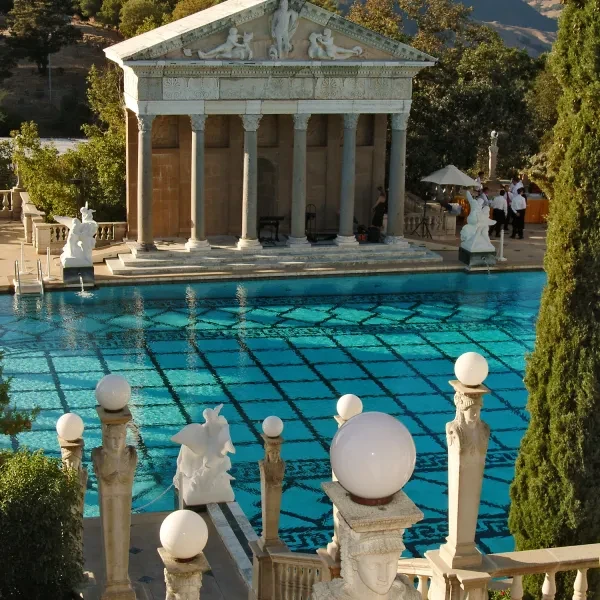
Heart Castle | Courtesy of California State Parks
Hearst Castle (Hearst San Simeon State Historical Monument)
An opulent Mediterranean-style castle with major design pedigree overlooking the Central Coast
San Simeon, CA
No discussion of architecture in California is complete without mention of Julia Morgan or Hearst Castle. Morgan, born in San Francisco, was the most prolific architect of the 20th century, a feat that’s even more impressive considering she was one of the only women in that field at the time. Five state parks are home to a Morgan building, and none are more well-known than Hearst Castle. The estate known as “The Enchanted Hill” boasts a 115-room main house, many guest houses, and grounds including multiple pools, 8 acres of gardens, and what used to be a zoo. Morgan worked with owner William Randolf Hearst for over 30 years, turning what was once the Hearst family’s campsite into a world-famous destination.
Visit the park website for more information on current park status, hours, tour timing, and reservations.
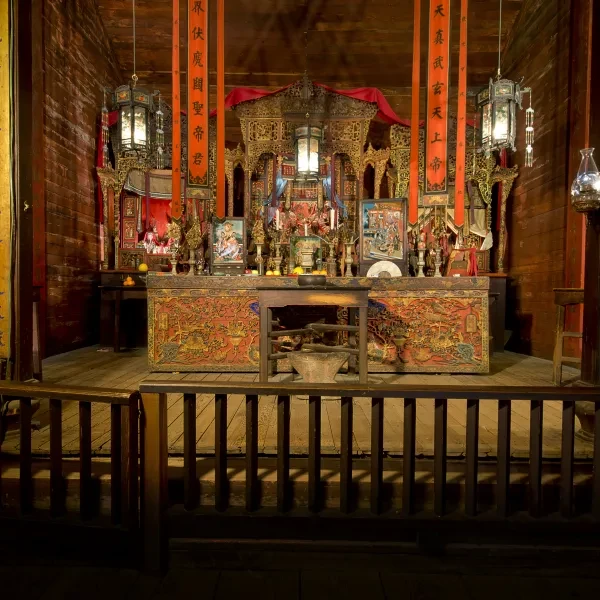
Weaverville Joss House State Historic Park | Courtesy of California State Parks
Weaverville Joss House State Historic Park
Gold-rush era Taoist temple near the Trinity Alps in Northern California
Weaverville, CA
This state park houses “The Temple of the Forest Beneath the Clouds,” the oldest continuously used Chinese temple in the state. The building features hand-carved artwork from China on display. There is also a small museum with artifacts from the California Gold Rush era. The temple has been beautifully and accurately maintained; visitors can admire the interior as it was built in 1874 (nothing has been changed other than the addition of electricity and protective railings.)
Visit the park website for more information on current park status, hours, tour timing, and reservations.
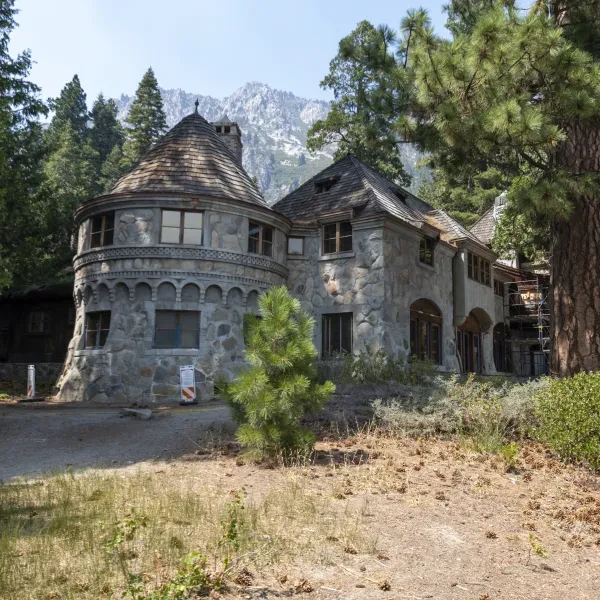
Vikingsholm | Courtesy of California State Parks
Vikingsholm (Emerald Bay State Park)
A Scandinavian-style mansion on Lake Tahoe’s southwestern shore
Tahoma, CA
Built by Lora Josephine Knight in 1928, this 38-room mansion stands alone as one of the best examples of Scandinavian architecture in the entire country. Visitors can admire the efforts of 200 workers who built the house, hand-carving intricate design flourishes, building walls made of granite quarried from the land behind the mansion, and painting murals on ceilings. Access this house by taking a short (but steep) one-mile hike from highway 89 above the house, or boat up to the shores of Emerald Bay State Park and walk up from the beach!
Visit the park website for more information on current park status, hours, tour timing, and reservations.
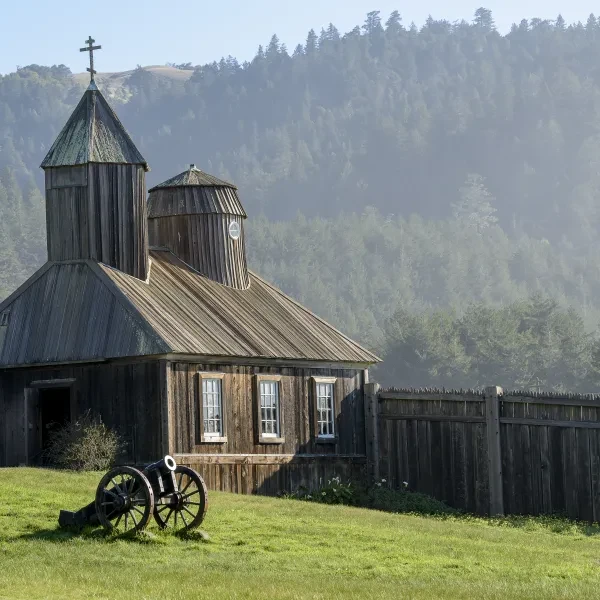
Fort Ross State Historic Park | Courtesy of California State Parks
Fort Ross State Historic Park
An early 1800s trading and ranching outpost on the Sonoma Coast
Jenner, CA
This state park unit preserves the southernmost Russian settlement in North America, where windmills and ships were built in California for the first time. This site was established to provide agriculture to Russian settlements in Alaska; as a result, the settlement included people of Russian, Native Alaskan, and local Native descent. Visitors can admire many reconstructed buildings, and a replica Russian windmill contained within the fort’s stockade walls. Notably, the Rotchev house is thought to be one of the only remaining original Russian buildings from this period.
Visit the park website for more information on current park status, hours, tour timing, and reservations.
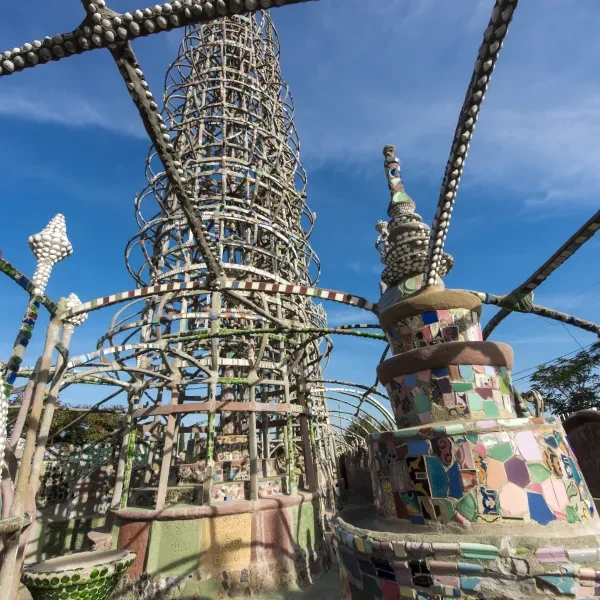
Watts Towers | Courtesy of California State Parks
Watts Towers of Simon Rodia State Historic Park
Otherworldly 90-foot-tall structures in the heart of Los Angeles
Los Angeles, CA
Built by Italian immigrant Sabato “Simon” Rodia in the 1920s and 1930s, the seventeen spires that make up this impressive public art installation are beloved by the local community, artists, and tourists alike. For 33 years Rodia used scraps of sheet metal, rebar, glass shards, and other scrap materials to create his towers. Much of the material was brought to him by neighborhood children. Throughout the construction of Nuestro Pueblo, Rodia dealt with legal challenges, discrimination, vandalism, and a myriad of other hurdles. However, his persistence allowed him to finish the towers and the community embraced the public art project as a piece of Watts history. There’s much to admire, whether reveling in the sheer size of the construction or observing the minute details, like historic pottery and bottle shards that decorate the towers.
Visit the park website for more information on current park status, hours, tour timing, and reservations.
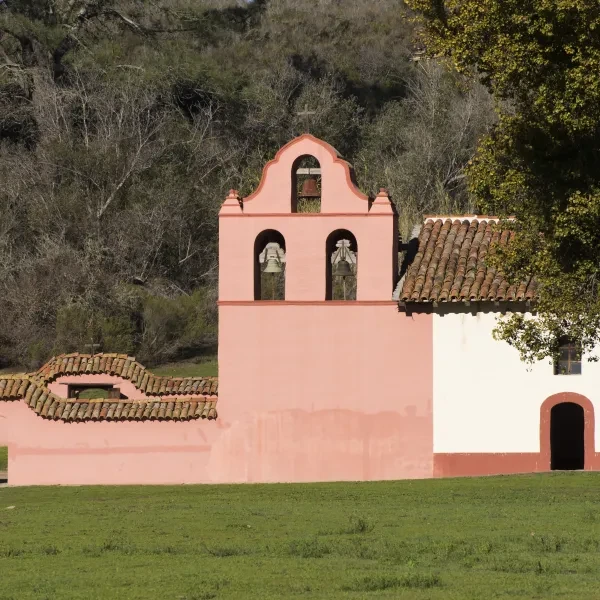
La Purísima Mission | Courtesy of California State Parks
La Purísima Mission State Historic Park
A historically accurate mission restored by the Civilian Conservation Corps (CCC)
Lompoc, CA
The original La Purísima Mission (Misión la Purísima Concepción de María Santísima) was founded in 1787 and then destroyed by an earthquake in 1812. The 11th of the 21 Franciscan Missions in California was moved to its current site in 1813. Throughout the centuries it fell into disrepair and was deeded to the state in 1933. This fortuitous timing allowed the CCC to undertake “one of the largest historical restoration and reconstruction projects” in the country. This work included using archeological techniques to locate building ruins, reconstructing adobe bricks using clay dug from the surrounding hills and using the on-site carpenter and blacksmith shops to furnish the rooms. Visitors can now tour ten fully restored buildings.
Visit the park website for more information on current park status, hours, tour timing, and reservations.